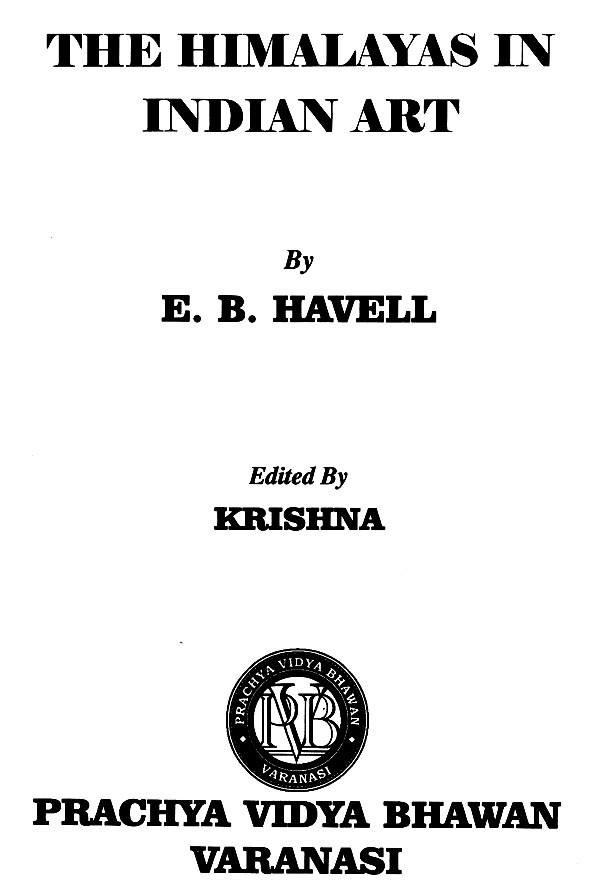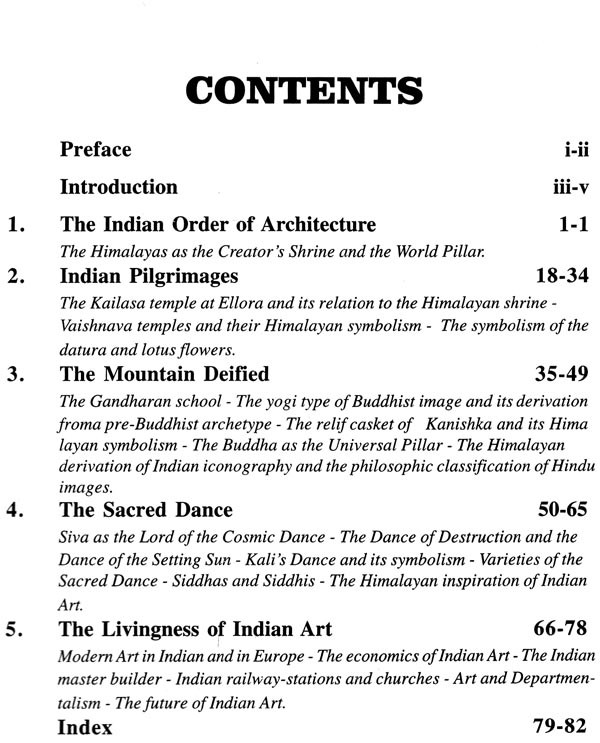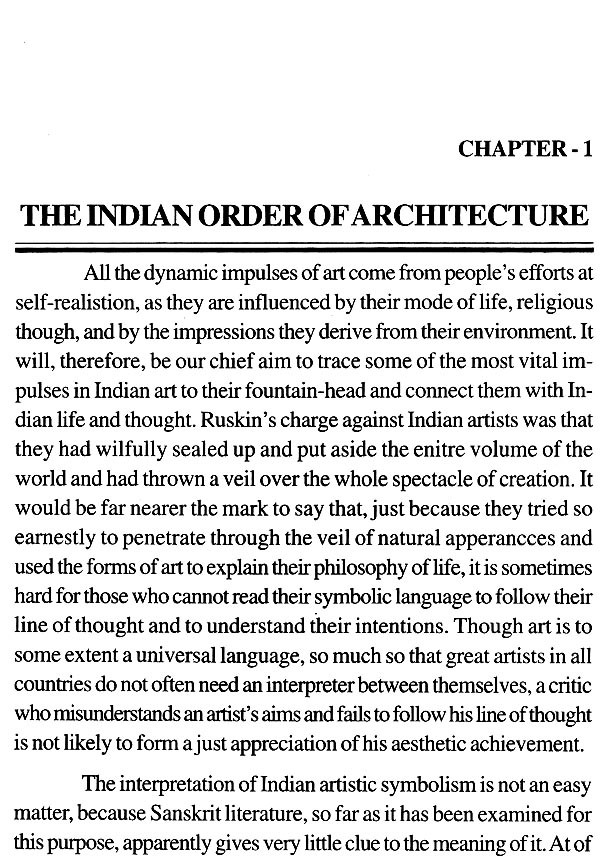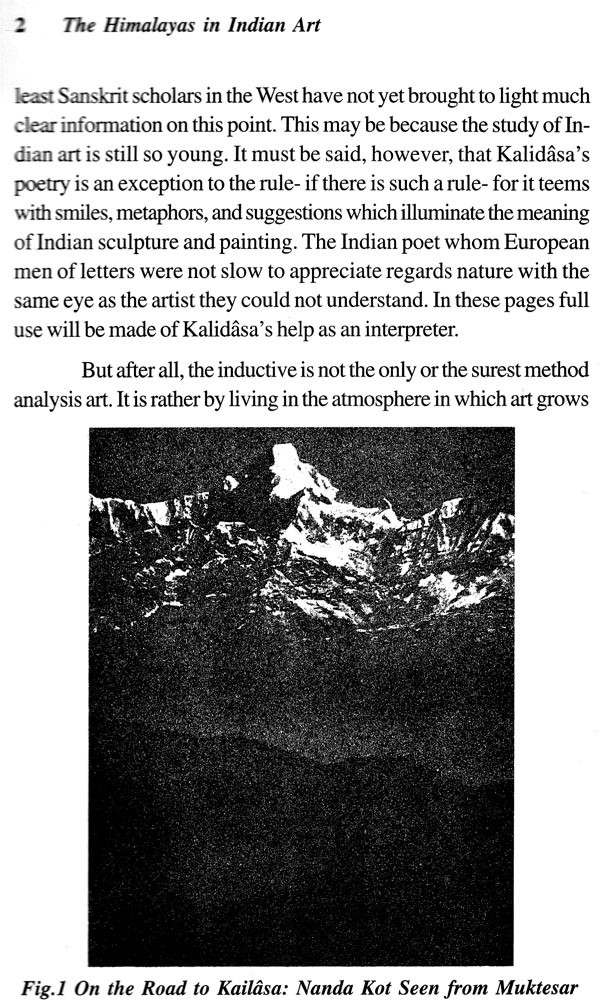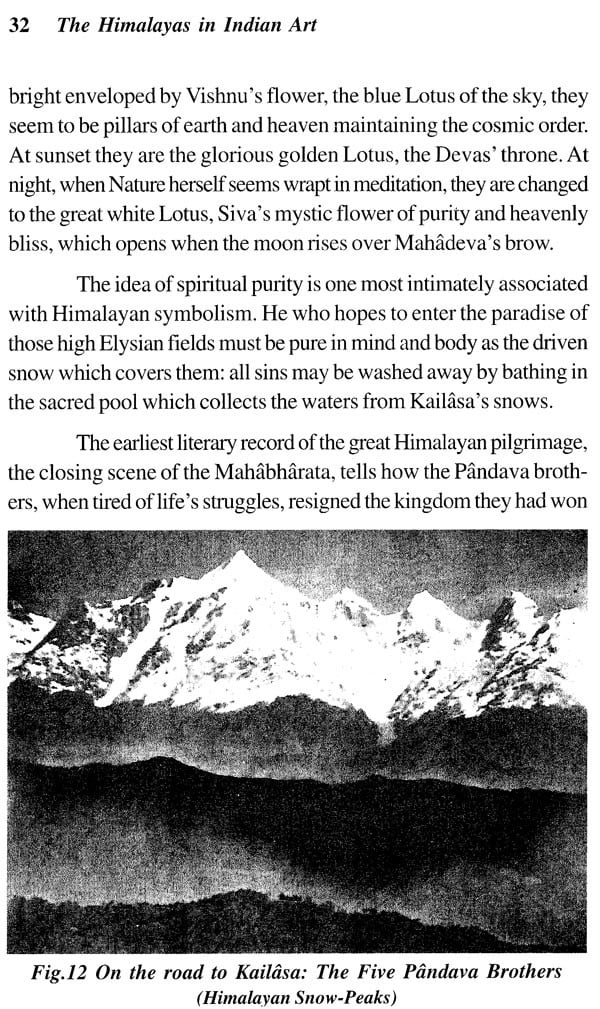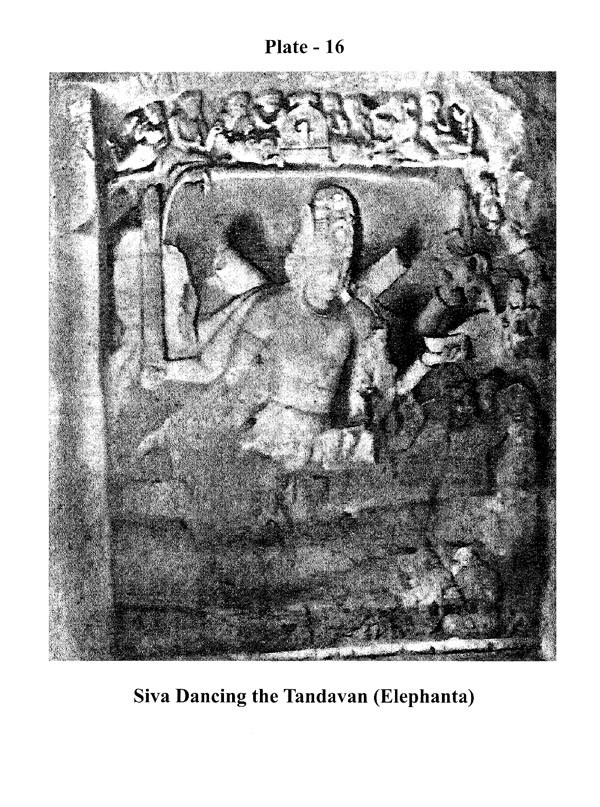About the Book This monograph, which represents the For long Bequest Lectures given at the School of Oriental Studies, 1924, offers a new approach to the study of Indian art, by way of the Himalayas-certainly the surest and most direct path for arriving at the central ideas of the Indian artist and craftsman. Public interest for the moment is concentrated on Himalayan scientific exploration. The Himalayas offer equal opportunities for artistic research: they have always been the pivot of Indian religious art. The Indian order of architecture, the design of Indian temples, and the symbolism of the principal figures in Indian iconography are all focussed on the Himalayas. Since the publication of my Indian Sculpture and Painting in 1908 the literature of Indian art has been constantly growing; the present work is partly a summary, partly a revision, and partly a completion of my previous studies. It presents concisely the leading ideas of the Indian temple builder, sculptor, and painter, and connects the artistic traditions of India with Indian daily life and work.
Preface This monograph, which represents the For long Bequest Lectures given at the School of Oriental Studies, 1924, offers a new approach to the study of Indian art, by way of the Himalayas certainly the surest and most direct path for arriving at the central ideas of the Indian artist and craftsman. Public interest for the moment is concentrated on Himalayan scientific exploration. The Himalayas offer equal opportunities for artistic research: they have always been the pivot of Indian religious art. The Indian order of architecture, the design of Indian temples, and the symbolism of the principal figures in Indian iconography are all focussed on the Himalayas. Since the publication of my Indian Sculpture and Painting in 1908 the literature of Indian art has been constantly growing; the present work is partly a summary, partly a revision, and partly a completion of my previous studies. It presents concisely the leading ideas of the Indian temple builder. Sculptor, and painter, and connects the artistic traditions of India with Indian daily life and work.
Intrduction The Western artist who strives to penetrate into the inner sanctuary of Indian thought has first to clear the ground of many misconceptions, obscurities, and historical fallacies, for Indian art, though very old in itself, is from a Western point of view a new subject of study. It is hardly more than fifteen years since it began to emerge from the category of ethnology and to be taken. seriously into account by modern art critics as belonging to the domain of aesthetics, from which we generally exclude all the art of uncivilised peoples. Ruskin, in the mid-Victorian era, brought his heaviest artillery to bear upon it, and attributed to the Devil and his myrmidons all the ideas of the Hindu sculptor and painter as he understood them. Even James Fergusson, whose great pioneer work aroused European interest in Indian architecture, at tributed to Pathans, o Arabs, and Mongols a special genius for building which did not belong to Indians. Though the beauty of the art a paintings compelled admiration, they were, he thought, to be explained as an offshoot of the Early Persian School, and therefore distantly connected with Greek art.
**Contents and Sample Pages**
